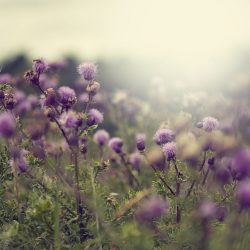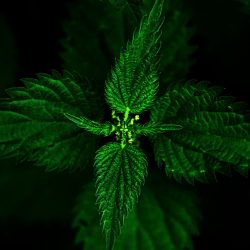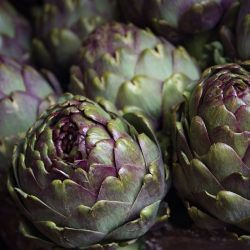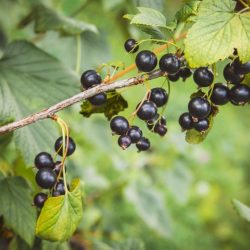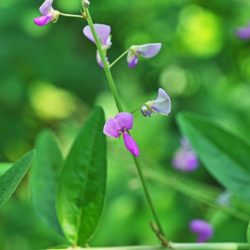Orthomyxovirus and influenza viral infection
The flu is a highly contagious acute respiratory infection caused by viruses Myxovirus influenzae .
It manifests itself in the form of seasonal epidemics and affects up to 7 million people in France each winter. The influenza A (the most virulent) is responsible for most epidemics. The large number of patients each year, as well as the sometimes fatal complications of the disease, make influenza a major public health problem.
Influenza viruses are passed from person to person through respiratory secretions when sneezing or coughing. They can also be transmitted by contact with surface objects (door handle, telephone handset) handled by an infected person. Confined and busy places (metro, bus, school communities) are conducive to the transmission of these viruses. The first flu symptoms usually appear suddenly (fever, fatigue, body aches, stuffy or runny nose, headache, etc.). These symptoms go away within one to two weeks. This is in fact a simple flu.
However, many viruses other than influenza cause a similar clinical picture. Complicated flu is much more serious and sometimes fatal. These complications are due to the viruses themselves or to secondary bacterial infections (pneumonia) that they can cause. During an epidemic, complicated influenza mainly affects the elderly and the weakened (chronic disease: cardiac, pulmonary, renal, metabolic, immunological, cancerous). Some simple hygiene measures can help limit the transmission of influenza viruses from person to person: protect yourself against coughs in patients, wash your hands after having been in contact with an infected person or his close environment.
Influenza is therefore a public health problem responsible for serious illness and death. The contagiousness is very important during the first days of the disease and this, for 6 days after the onset of symptoms.
Epidemiology and mode of contamination :
Influenza manifests as a widespread and sporadic disease during fall and winter each year in temperate climates (seasonal epidemic).
There are three types of seasonal influenza: A, B and C. Influenza A viruses are subdivided into subtypes determined by the proteins present on their surface: hemagglutinin H1 to H15 and neuraminidase N1 to N9. Among the many subtypes of influenza A viruses, there may be mentioned the subtypes A (H1N1) and A (H3N2).
The seasonal epidemics are caused by influenza A and B; since 1968, most seasonal influenza epidemics have been caused by the H3N2 virus (an influenza A virus). Influenza B viruses can cause less severe illness, but are often responsible for moderate or severe epidemics, either as the predominant virus in circulation or associated with influenza A virus.
Influenza viruses circulate in all parts of the world. Cases of influenza type C occur much less frequently than types A and B, which is why only influenza viruses A and B are included in the composition of vaccines against seasonal influenza.
Most of the time, type A viruses are responsible for more severe attacks than type B viruses. Type C viruses are not the cause of influenza-like illness.
In general, influenza epidemics occur in two stages: first in school children and those around them, then in the elderly, during the fall and winter.
Airborne contamination is the most common transmission of the disease, via Flügge droplets.
Some naturopathic advice in case of the flu :
- Lots of bed rest
- Have good hydration
- Take baths at 35 ° C
- Clean the nose with salt water in case of congestion to reduce secretions
- Eat a healthy and balanced diet, rich in vitamins (especially vitamin C )
Plants and influenza :
Sea buckthorn is renowned for its adaptogenic and stimulating activity. Indicated in influenza and viral diseases, it is a major ally in convalescence.
The vitamin C content of sea buckthorn gives it tonic properties in winter ailments. The flavonoids it contains increase non-specific immune responses and stimulate the production of red blood cells in the marrow, which explains its immunostimulating effect.
It is advisable to take 15 drops in the morning upon waking, or 7 to 8 drops at noon and in the evening in a glass of water, 15 minutes before a meal for 21 days. A 2-month cure is however recommended with a break of one week every 3 weeks.
The interest of nonspecific immunostimulation has its usefulness during the flu itself, in order to strengthen the organism in its natural defense. The use of echinacea at a higher dose can act on the adrenal gland and have an effect on asthenia.
20 to 50 drops of TM per day, to be taken every morning outside the flu period, continuously from October to March. Or a teaspoonful of Echinacea EPS .
In case of influenza, you can switch to a tablet form: EPS Echinacea / cypress tablet; 3 to 4 per day.
- Made-to-measure sudorific and draining herbal tea based on febrifuge plants :
It is also possible to combine it with a tincture of Salix alba as a febrifuge .
- Stimulating plants in the treatment of general condition and fatigue :
In the event of post-influenza asthenia, to shorten the convalescence, it will be necessary to administer some stimulating plants such as:
– Ginseng (adaptogen)
– Acerola
- Complementary treatments :
– Fir buds (Abies pectinata)


